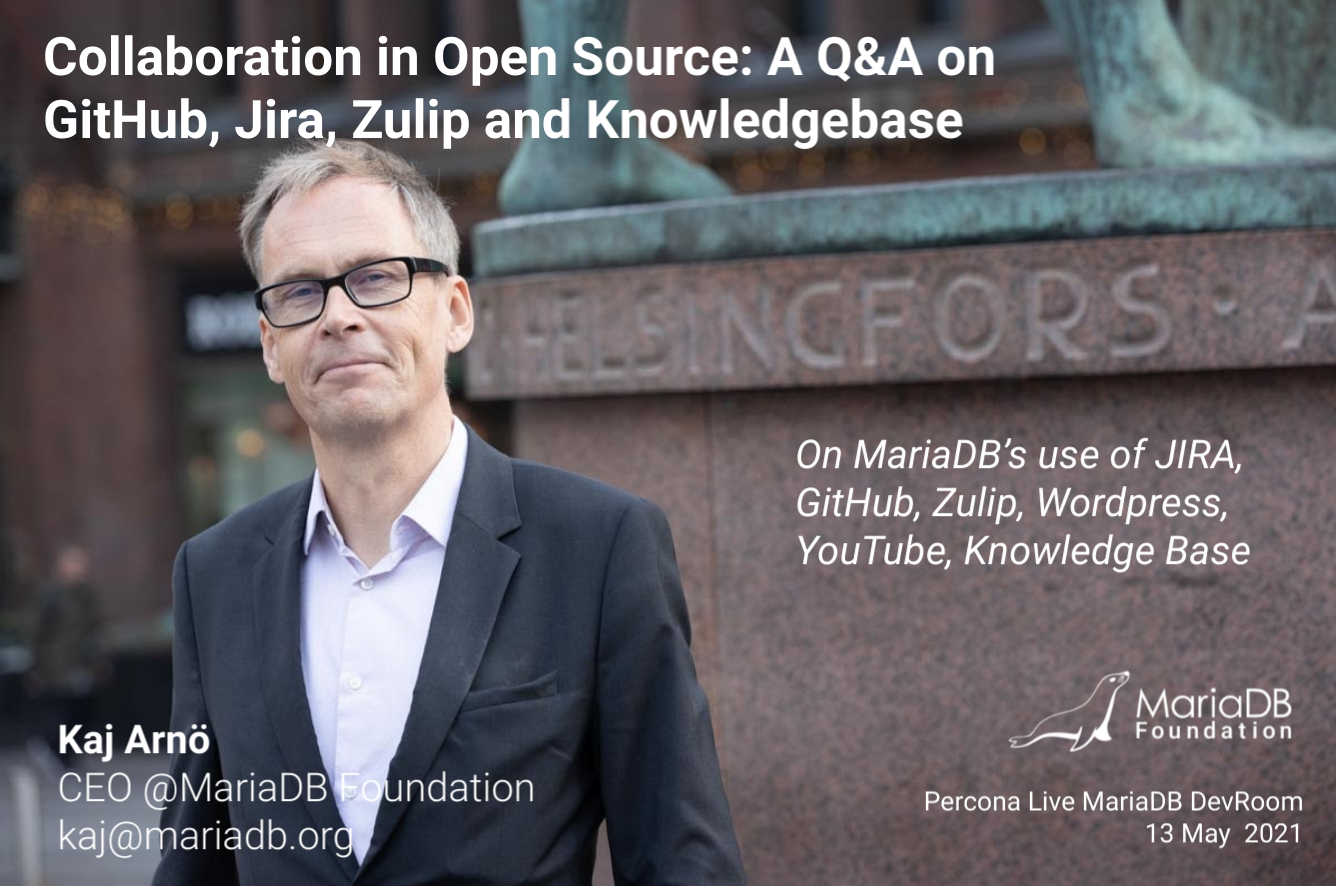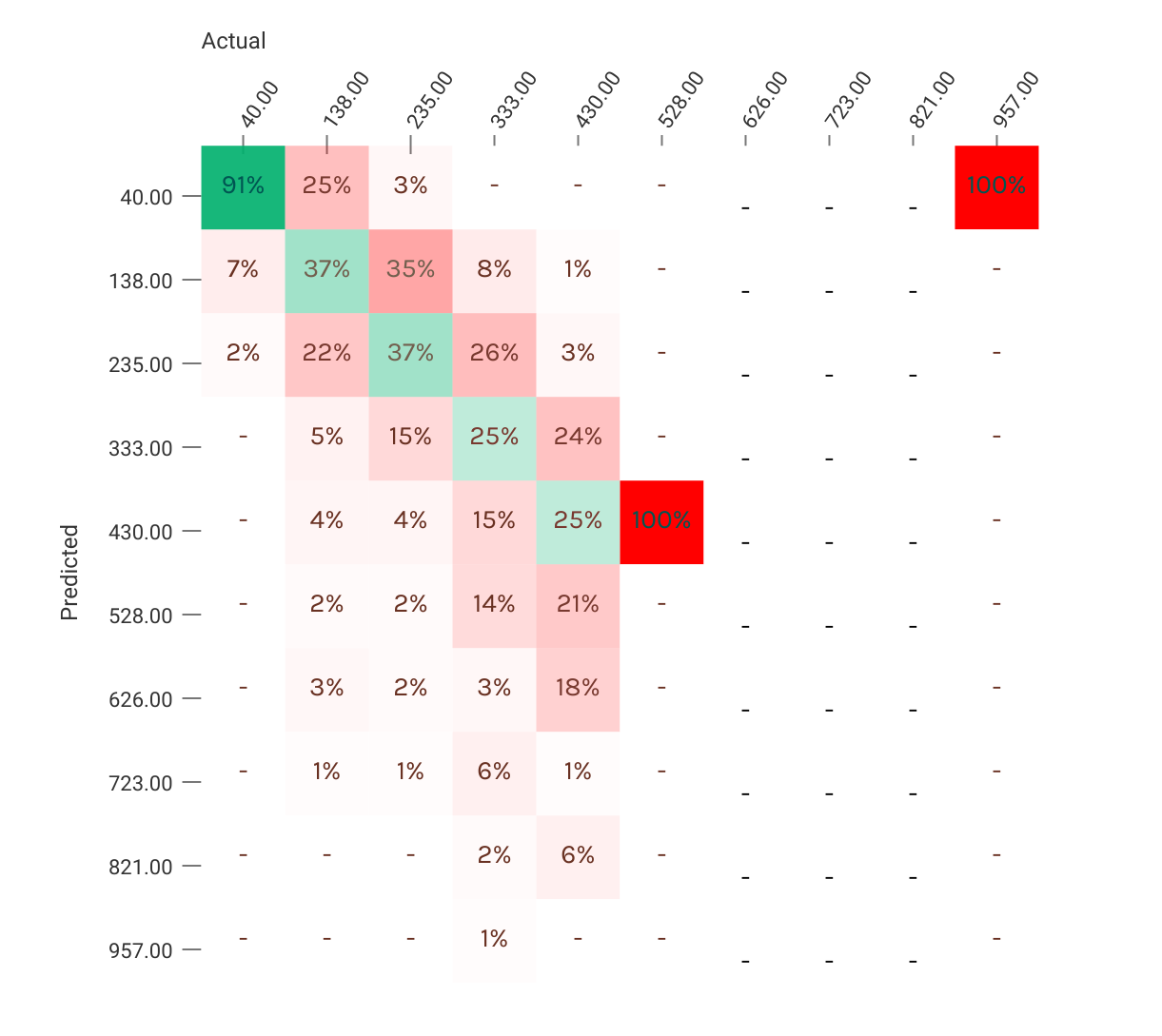Tag Archives: community
Our most recent MariaDB Server release introduced some regressions starting with the 10.6 series, affecting 10.7 – 10.9 as well. This blog post is here to explain the problems in hopes that the impact is minimized. We are likely going to release a new version of MariaDB correcting these problems soon.
InnoDB Full Text Index on tables causes an assertion error (MDEV-29342)
There was a bug in the InnoDB Storage Engine where the full text index could go out of sync with the actual table data. This would happen when only one new row was inserted between the last InnoDB sync (which happens asynchronously) and a server shutdown.
…
Continue reading “Regressions in recent MariaDB Server releases”
I have been working for the MariaDB Foundation as the Chief Contributions Officer for a couple of weeks and it is fantastic being part of the MariaDB family again. Part of my job is to help the community massage pull requests into something that we can merge. I am, however, finding that one of the worst parts of my job is having to say “no” to contributions that clearly took a lot of time and effort on the part of the developer.
Contributions could be turned down or at least will require changes for a number of reasons.
…
Continue reading “The Path to Code Contributions in MariaDB Server”
Good news is that the MariaDB Foundation and members of the MariaDB community are participating in Percona Live Online on the 12th – 13th of May, and we are excited to interact with you there. This year there’s a dedicated MariaDB Community track, as well as sessions spread throughout the conference. There’s a diverse range of topics, and a few tutorials to go a little deeper. Here’s a selection of MariaDB-related sessions you can expect at Percona Live Online:
— First Day —
12th May, 06:30 – 07:00 EDT (UTC -4)
Daniel Black – MariaDB Foundation
Logical mariadb-dump –system migration
12th May, 11:00 – 12:00 EDT (UTC -4)
Valerii Kravchuk – MariaDB Corporation
Monitoring and Tracing MySQL or MariaDB Server With Bpftrace
12th May, 13:00 – 13:30 EDT (UTC -4)
Vicentiu Ciorbaru – MariaDB Foundation
What’s new in 10.6
12th May, 13:30 – 14:30 EDT (UTC -4)
Kaj Arnö – MariaDB Foundation
Collaboration in Open Source: A Q&A on GitHub, Jira, Zulip and Knowledge Base
12th May, 14:30 – 15:00 EDT (UTC -4)
Vicentiu Ciorbaru – MariaDB Foundation
JSON additions in MariaDB – featuring JSON_TABLE
12th May, 15:00 – 15:30 EDT (UTC -4)
Anna Widenius – MariaDB Foundation
Virtual work and leadership in the time of pandemics
12th May, 15:30 – 16:00 EDT (UTC -4)
Vicentiu Ciorbaru – MariaDB Foundation
MariaDB ColumnStore – A columnar storage engine, first class citizen in MariaDB
12th May, 16:00 – 17:00 EDT (UTC -4)
Federico Razzoli – Vettabase
Automating MariaDB deployments with Ansible
12th May, 17:00 – 18:00 EDT (UTC -4)
Valerii Kravchuk – MariaDB Corporation
Flame Graphs for MySQL DBAs
— Second Day —
13th May, 07:30 – 08:00 EDT (UTC -4)
Krunal Bauskar – Huawei
Open Source Databases and ARM
13th May, 08:30 – 09:00 EDT (UTC -4)
Pedro Albuquerque – TransferWise
MariaDB High Availability in a Cocktail Mix with Envoy and Orchestrator
13th May, 09:00 – 09:30 EDT (UTC -4)
Robert Bindar – MariaDB Foundation
MariaDB Notebooks in JupyterHub
13th May, 11:30 – 12:00 EDT (UTC -4)
Ian Gilfillan – MariaDB Foundation
When and why to use MariaDB: Key Features in 10.0 to 10.5
13th May, 12:00 – 12:15 EDT (UTC -4)
Kaj Arnö – MariaDB Foundation
Collaboration in Open Source: A Jungle that needs Structure …
You might have heard the story of how we picked a sea-lion as our logo. Now that this lovely beast has been with us for a while, we think it’s high time to give it a name and of course we turn to our wonderful community for suggestions.
The rules are simple: complete this form, telling us what you think we should name the sea lion and why. Later, Maria Widenius will pick her favorite from the submissions, and the winner will get a collection of MariaDB t-shirts and other swag, an artwork by Maria, and of course eternal fame!
…
Machine learning is one area that cannot succeed without data. Traditionally, machine learning frameworks read it from CSV files or similar data sources. This brings an interesting set of challenges because in most cases the data is stored in databases, not simple raw files. It takes time and effort to move data from one format to another. Additionally, one needs to write some code (usually python) to prepare the data just like the ML framework expects it.
I was pleasantly surprised when I saw during the MariaDB Server Fest that MindsDB, an automatic machine learning system, presented their integration with MariaDB.
…
How MariaDB Server is tested
MariaDB Foundation is commited to ensuring MariaDB Server has a thriving community of developers and contributors. A software project cannot be maintained without proper tests. mysql-test-run is our standard testing toolkit for MariaDB Server. What it (mostly) does is run queries against one or more servers and compare their output to the expected one. This checks both behaviour and data consistency. The main principle is the server should always return the same data that is put into it.
One problem with this testing method is that it only covers the hosts’ environment. That means that if you are running Debian on x86_64 architecture, you are testing x86_64 architecture on a Debian Linux distribution. …
Continue reading “MariaDB Server’s continuous integration & testing available to community”
One of the goals of the MariaDB Foundation is to help new contributors understand the source code and to lower the barrier for new participants. One way to measure this is to look at the number of pull requests received and accepted, as these mostly reflect community contributions. The figures below are for the main server only, not any of the connectors or tools hosted on the Foundation’s GitHub account, and for the period 1 January to 1 July 2017.
Number of GitHub pull requests received: 126 (+113% Year-on-Year)
Number of pull requests reviewed: 102 (+76% YoY)
Number of contributors: 28 (+22% YoY)
Number of reviewers: 13 (+44% YoY)
By comparison, here are the equivalent figures for MySQL:
Number of GitHub pull requests received: 35 (-10% Year-on-Year)
Number of contributors: 19 (+27% YoY)
Although the MariaDB codebase is large and complex, we’re happy to see that there have been some interesting and important contributions from the community. …
Today we have published a long overdue facelift of the MariaDB.org website. You are looking at the result right now! Some of the highlights are:
- New responsive design with the new logo and a blue theme
- The old blog has been merged into the main MariaDB.org site
- The supporters of the Foundation are much more visible thanks to the big banner in the footer
- What the MariaDB Foundation is and what it does is now better presented
- Policies related to MariaDB and instructions on how to contribute to the open source project have been updated
- It is now easier for individuals to donate to the Foundation thanks to the PayPal and Flattr buttons.
…
Continue reading “New MariaDB.org with fresh looks and contents”


